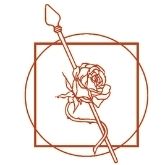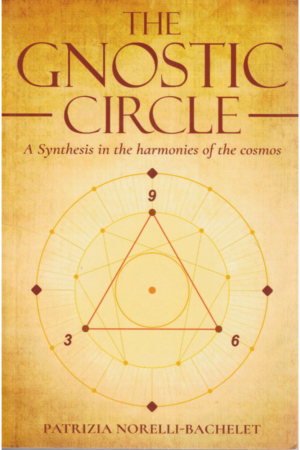The Zero, the Veda,and the Divine Measure of the Year
The Zero, history records, was India’s contribution to mathematics. We take for granted today the knowledge of this cipher of incalculable value; we cannot imagine computation without it. But we would like to analyse the greater significance of this ingenious Naught that revolutionised mathematics in times gone by, and to demonstrate how this concept lies at the heart of all that is Vedic. To be precise, not just its mathematical value but above all its philosophical and psycho-spiritual content. We will then come to understand that the concept of Zero is indeed of Vedic origin and that it describes the heart and soul of everything Vedic. Likewise, we may use the Zero itself to understand the difficult times Vedic civilisation has known, and then in what way we can restore or unveil the true and deeper meaning of the concept to make it an active principle in society once again.
If we use the mathematical symbol for Zero as our guide in this journey of discovery, the alterations in the notation itself over the centuries will bring to light revealing developments. To illustrate, we note that originally it was drawn as a single dot or point, thus: •
In the ancient yogic realisation of the Zero, this ‘bindu’ was experienced as the compact essence of all veda. And by consequence, it held everything that would subsequently evolve into what we know as Vedic culture today. Though in contemporary times this culture differs significantly from the ancient Vedic civilisation,nonetheless it evolves in a direct line from the consciousness of that Rishi who had first broken through certain barriers to enter a dimension where the secrets of the Zero are found. And there he did find veda. This placed its stamp on everything that was to follow from that original breakthrough.
Via another visualisation this Zero Point appears to our inner eye as a ‘seed’ or bija. And similar to a biological seed, if the Zero is the compacted essence of Veda, nothing other than that can grow out the original Bija.
Thus, the origin of Vedic civilisation and culture can be traced back to the birth of the Zero. But it did not arise in the mind of a mathematician. It was born of the vision and realisation of the ancient Rishi, the fruit of his arduous tapasya. Above all,and this is the most important feature of the Zero, it came to him as Purnata, the Fullness. Indeed, if the Veda is the compact essence of the Zero-Seed, only Fullness can describe its true nature. Thus, Zero=Fullness=Veda.However, a seed cannot grow in a vacuum. The sperm requires a womb and a seed its soil. Once born, the Zero/seed gathers nourishment for its growth from the surrounding soil to attain its full potential. It is not separate from its environment. But in this play of interconnection or intermingling, difficulties arise. We can understand the nature of the problem by simply observing the development of its mathematical notation from ancient times to the present. Though it always contains the essence of the Veda, for that was the Rishi’s realisation, the evolution of the notation began to reflect a concept very different from the Rishi’s experience. It went from Point to Empty Circle; or from Fullness to the Shunya we know today as Zero: 0.
That is Fullness, this is Fullness,from Fullness comes Fullness.When Fullness is taken from Fullness,Fullness remains. (Brihadaranyaka Upanishad, 1.10)
According to these verses, so essential an expression of Vedic culture, we can easily appreciate that this Shunya can never represent that Fullness. Something happened along the way to have allowed for this transmutation, this opposite expression of the original Vedic Point/Zero. Indeed, if the Zero lies at the origin of the Vedic experience,naturally this dramatic disconnect would have to be central to any enquiry into the history of Vedic culture on the subcontinent. How and when did this shift take place?
What is its philosophical/yogic import? As a civilisation, how then are we affected by this dramatic shift from Fullness, the essence of our origin, to Emptiness, its opposite,5from Light to the darkness of the Void?Let us now examine how we can APPLY our understanding of Zero as Fullness and not the emptiness of Shunya, and in which way this may affect the life of Hindu Society. That is, where do we find this Zero in our collective life, the common experience for all its members? The Zero comes alive for each of us at birth, our very own personal Zero Point,- specifically our entry into Earth time; or else at the beginning of an enterprise, a movement, even a nation. More particularly, at the start of every new year. Indeed, for Hindu Society this would be its most important connection with the Zero in that it affects the entire society that celebrates this occasion collectively. And we do this via the calendar, or calendars, as the case may be. In India we do indeed find a plethora of calendars, each one binding on the group or caste or sect that adheres to the calculations of its pundits or astrologers as to when exactly their particular year began. But are there really different years? Properly speaking, the year begins when day and night are equal, the Equinox in March. That is its Zero Point; or more specifically, the 0 degree of the ecliptic whence the zodiac of twelve signs/months ensues. Yearly, from the moment we take birth we become engaged in this ‘journey’, as it is called in the Veda. None can escape this common destiny. We may ignore it; we may prefer to consider another point in time as our‘beginning’. But this does not mean that there is any basis in Veda for our choice, or even in astronomy. More importantly, these different calendars, each with their own purported Zero Point, serve to disunite rather than to unify – though this was the objective of calendars in all evolved civilisations of which we have memory.Thus, this Zero entry into the ecliptic circle, within which all the planets orbit the Sun, can be visualised as a sort of science fiction wormhole. Through it, when calculations are correctly done, we gain access to secret places and secret forces. As a society, this common entry according to true Vedic Wisdom generates a binding and protective power. Indeed, because Hindu Society has lost access to that sacred Cipher,where time and space conjoin, it has no hold on the key to generate forces for its own protection and expansion.
It may safely be stated that the evolution from point to empty circle encapsulates the entire history of the Vedic decline. Nowhere is this made more evident than in the time factor incorporated for Vedic sacrifices. For it is that very same Zero point, or ayanamsha, that initiates the yearly journey as recorded in the Veda. As the Rig Veda tells us, it is in the course of the year that the victory is attained. Thus, the quality or precise connections between time and space of this all-important Ayanamsha will reveal itself to be the most significant element in the Sacrifice. And if the Zero for us becomes Shunya, then the start of the yearly sacrifice can only be chaos which is born of emptiness, of nothingness. We cannot overstate the point: It is always the Zero we must turn to because it determines our entry into Earth time, the first breath we take in our journey of fulfilment of our individual and collective Dharma. It is the numerical representation of the Sun of our solar system. Hence, it is in this Zero that we discover our purpose as a society ever at the service of that Light.
But what is the realistic position of Hindu Society today? Indeed, as the Veda tells us, it has ‘lost the Sun’. It has lost the Divine Maya or Measure as prescribed in the Veda. The Zero is not the Fullness out of which springs an orderly flow of days and nights in the course of the Earth’s annual revolution around the Sun. Access is denied into this sacred wheel because the harmony has been transgressed. There is no increase of the Light in the course of the year that carries us to the apex of the journey, the Makar Sankranti, that sacred most tenth month as measured from the March Equinox when the victory is finally accomplished and the Earth begins to experience an increase of the Light.
Today the harmony is not respected. Nowhere is this better demonstrated than by the fact that there are many ayanamshas, many calendars, each purporting to be‘correct’. But when the pundit or astrologer loses sight of what exactly he must measure to gain access to the sacred zero-chamber where Knowledge is found – that is, the measure the Earth herself offers to the solar system of which our planet is an intrinsic part – then we can safely state that the Zero of Fullness has effectively become the Shunya of Emptiness. Such being the case, disunity must ensure, disintegration and not integration, because the correct beginning is not observed.
The article that follows as a first offering to the Hindu Samaj was originally written for the Kashmiri Pundit community insofar as its plight is typical of the inability of Hinduism to generate a power sufficient for its protection. Rituals upon rituals are performed, but where is that integrating and protective power they are intended to provide? The reason for this impotency as a collective experience can be traced to the loss of Fullness and immersion into the Void where only chaos is found.
Nothing is right, nothing is in its place. The ayanamsha of Fullness which generates Order and Power, and certainly the power to integrate, cannot arise from the void of Nothingness, or the Zero as we know it today after centuries of decline. Thus, to integrate, to unify, to fortify, to render whole what has been torn asunder, we must seek to understand the root of the problem. Once we have located the original ‘knot’ as it were, we can proceed to undo it; and then the emergence of the pristine and true essence of the Zero can begin.The temple is the focal point of Hindu society. This is not to state that Vedic sacrifices can only be performed in temples, but simply that the temple with its presiding pundits and priests is usually where the timing of rituals is established for the community at large. Therefore, because the calendar of festivals and sacred observances serves as a binding web for the civilisation, it naturally stands that the pundit’s duty is to respect the correct time factor as prescribed by the Veda itself, so that a harmony arises between Hindu society, the Earth and the cosmic surround. And for this binding power to be effectively established, the perfectly precise Zero Point, or Ayanamsha,where the Earthly and the Heavenly converge, is essential. But the position today is that false and un-Vedic measures are in vogue; these are examples of the ‘lost Sun’ which, according to the Veda, must be retrieved from the cave of powers hostile to Truth.Hindu society stands amidst the chaos that this loss engendered. Therefore we must now make order out of the chaos by discussing the restoration of the correct calendar as a very first step for the regeneration of Vedic civilisation.
Thea (Patrizia Norelli-Bachelet)
Aeon Centre of Cosmology
At Skambha, May 2006


